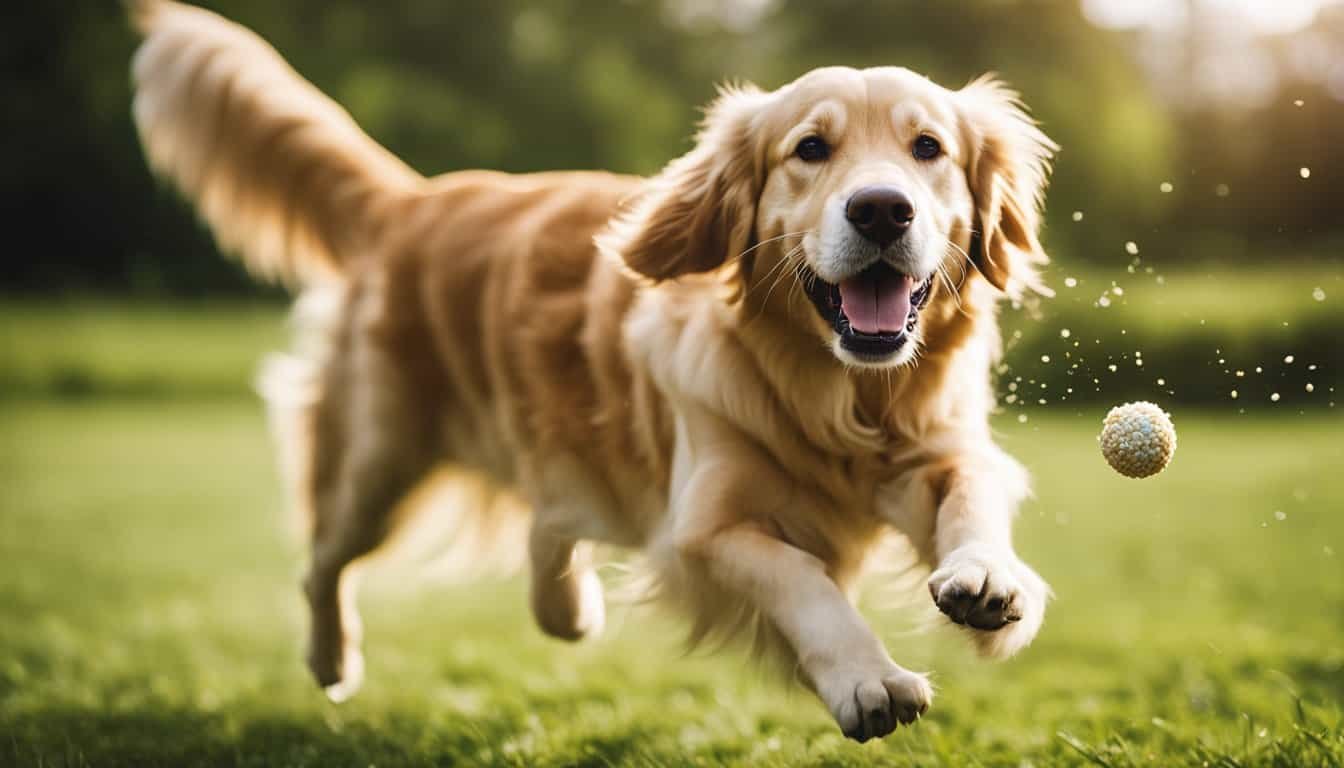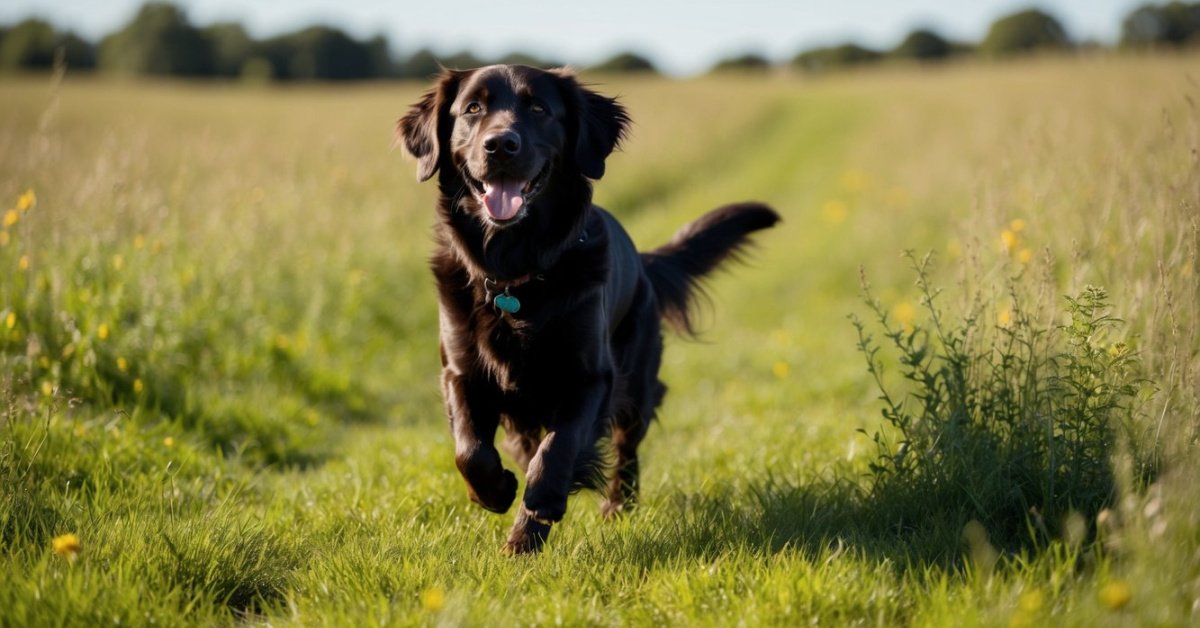There’s nothing quite like watching a Golden Retriever bound after a thrown ball, tail wagging with pure joy. These lovable pups are known for their playful nature and eagerness to please, making them perfect candidates for learning the art of fetching. But training them to fetch perfectly requires a bit of patience and the right techniques.
Understanding the Fetching Instinct
Golden Retrievers naturally possess a strong fetching instinct, making them enthusiastic participants in the game. This instinct stems from their breeding for retrieving game, which results in their love for fetching objects.
Importance of Instinct in Retrievers
Instinct plays a crucial role in a Golden Retriever’s ability to fetch. Breeders selected these dogs for traits like keen eyesight, strong retrieval drive, and willingness to work with humans. These characteristics enhance their motivation to chase and retrieve objects, leading to successful fetching. Understanding this instinct allows me to tailor training techniques, ensuring I engage my dog’s natural tendencies while fostering a love for the game.
How Fetching Decreases Anxiety
Fetching can significantly reduce anxiety in Golden Retrievers. The activity provides mental stimulation and physical exercise, releasing pent-up energy and stress. Engaging my dog in fetch creates a focused playtime that diverts attention from anxiety triggers. Consistent play promotes a sense of routine and security, enhancing overall well-being and improving behavior in other situations.
Preparing for Training
Preparing for training sets the foundation for a successful fetching experience with my Golden Retriever. Gathering the right supplies and choosing an appropriate environment play crucial roles in this process.
Essential Supplies for Training
Gather essential supplies to ensure effective training sessions. Here’s what I typically use:
- Fetch Toys: Select toys designed for retrievers, such as rubber balls or frisbees. Look for durable materials that can withstand chewing.
- Treats: Use small, soft treats that are easy to chew. These serve as rewards for successful fetch attempts.
- Clicker: Utilize a clicker for positive reinforcement. This tool helps in training by marking desired behaviors.
- Leash: Keep a comfortable leash on hand for initial training sessions to guide my dog.
- Water: Always have water available. Hydration is crucial during play.
Choosing the Right Environment
- Distraction-Free Zone: Use a quiet space, away from loud noises and other animals. This helps my Golden Retriever concentrate better.
- Open Area: Choose a spacious area where my dog can run freely. Parks or backyards work well to ensure enough room for fetch.
- Surface: Opt for a soft surface, like grass, to protect my dog’s joints and provide comfort during play.
- Weather Conditions: Avoid training in extreme weather. Mild temperatures ensure comfort and promote better engagement.
Training Techniques
Effective training techniques enhance a Golden Retriever’s ability to fetch perfectly. By utilizing positive reinforcement and structured steps, I can keep my dog engaged and motivated throughout the process.
Basic Commands to Start With
Establishing basic commands forms the foundation for fetching. I focus on these essential commands:
- Sit: Teach my Golden to sit to foster patience. It provides a strong start for any training session.
- Stay: Reinforcing the stay command ensures my dog remains in place until I signal to retrieve the toy.
- Come: Commanding my dog to come strengthens the bond and assures that they’ll return with the fetched item.
Utilizing treats or a clicker for positive reinforcement helps my Golden associate these commands with rewards, making learning enjoyable.
Gradual Progression to Fetching
Progressing to the fetching action occurs in stages. I follow this structured approach:
- Introduce the Fetch Toy: I show my dog the fetch toy, encouraging interest through play.
- Toss the Toy a Short Distance: I start by tossing the toy just a few feet away, keeping my dog focused on it.
- Encourage Retrieving: When my dog picks up the toy, I enthusiastically call them back, using the “Come” command.
- Reward Success: Upon returning with the toy, I reward them with praise or treats, reinforcing the behavior.
I gradually increase the distance of the toss as my dog becomes more confident. With consistency and patience, my Golden Retriever will respond eagerly, making fetching a delightful experience.
Common Challenges
Training a Golden Retriever to fetch perfectly presents various challenges. Understanding these hurdles helps in crafting effective training strategies.
Overcoming Distractions
Distractions pose a significant challenge during fetch training. I often face situations where other animals, people, or sounds interfere. To combat this, I choose a quiet training location to minimize distractions. Gradually introducing distractions can also help my dog learn to focus. For instance, I might start in a controlled environment and, over time, add minor distractions, rewarding my dog for maintaining attention. Consistent practice in different settings builds concentration and reinforces positive behavior.
Dealing with Reluctance
Reluctance to fetch can stem from various factors, including fear, lack of interest, or simply being unsure of the activity. I find it helpful to introduce the fetch toy gradually. Letting my dog inspect and play with the toy before throwing it can pique their interest. Using high-value treats as rewards also motivates my dog. I focus on encouraging small successes, like simply picking up the toy, to build confidence. If my dog remains uninterested, I switch toys or try shorter distances until they’re comfortable. Patience and persistence pay off as I help my Golden Retriever embrace the joy of fetching.

Advanced Fetching Techniques
« Ultimate Guide: How to Control Golden Retriever Shedding Effectively
Top Indoor Activities for Golden Retriever Exercise on Rainy Days »
I focus on advanced techniques to enhance a Golden Retriever’s fetching skills. The following methods elevate the game, keeping training engaging and effective.
Enhancing Distance and Accuracy
Increasing the distance of the fetch helps build stamina and confidence. I start by gradually tossing the fetch toy farther away as the dog masters the short distances. It’s essential to ensure the dog executes a successful retrieval before extending the distance. For accuracy, I use visual markers like cones to create clear targets. Toss the toy close to these markers, reinforcing the aim for the specific area. Use high-value treats when the dog achieves marked success, as this links precision with positive outcomes.
Introducing Variations in Fetching
Introducing variations prevents monotony and stimulates mental agility. I switch up the fetch toy, using balls, frisbees, or even plush items. Each new choice keeps the dog intrigued. I also adjust the environment, practicing fetch on different surfaces like grass, sand, or shallow water. Incorporating additional commands, such as “Find it!” or “Drop it!”, adds complexity. I mix spontaneous game elements as well, such as doing a mini obstacle course before throwing the toy. Each variation builds new skills, enhancing the overall fetching experience while keeping it enjoyable.
Tips for Successful Training
Training a Golden Retriever to fetch perfectly involves using effective techniques and staying committed. Here are some strategies to ensure success.
Positive Reinforcement Strategies
Positive reinforcement plays a crucial role in training Golden Retrievers. I use treats, praise, and playtime to encourage desired behaviors. When my dog retrieves the toy, I praise them enthusiastically, rewarding their effort immediately. Using a clicker helps mark the exact moment of success, making it clear to my dog what behavior I want to reinforce. I also ensure that the rewards are high-value treats, particularly favorites that my dog loves. This strategy creates a positive association with fetching, ensuring my dog stays motivated and engaged.
Maintaining Consistency
Consistency is essential in training. I always use the same command words and gestures for specific actions to avoid confusing my dog. It’s vital to practice fetching regularly and incorporate it into daily routines. When I train, I establish a clear schedule, dedicating a specific time for sessions each day. Additionally, I maintain the same training environment during initial sessions to build familiarity. This approach helps my Golden Retriever understand expectations and creates a structured learning atmosphere that fosters growth.
Conclusion
Training my Golden Retriever to fetch has been one of the most rewarding experiences. Watching my pup’s excitement as they chase after the toy brings so much joy. The bond we build through this activity is truly special.
By using patience and positive reinforcement I’ve seen my dog grow more confident and skilled. It’s amazing how something as simple as fetching can provide both mental stimulation and a sense of routine.
I encourage you to embrace the journey with your furry friend. With a little dedication and the right techniques you’ll create wonderful memories together. Happy fetching!


















